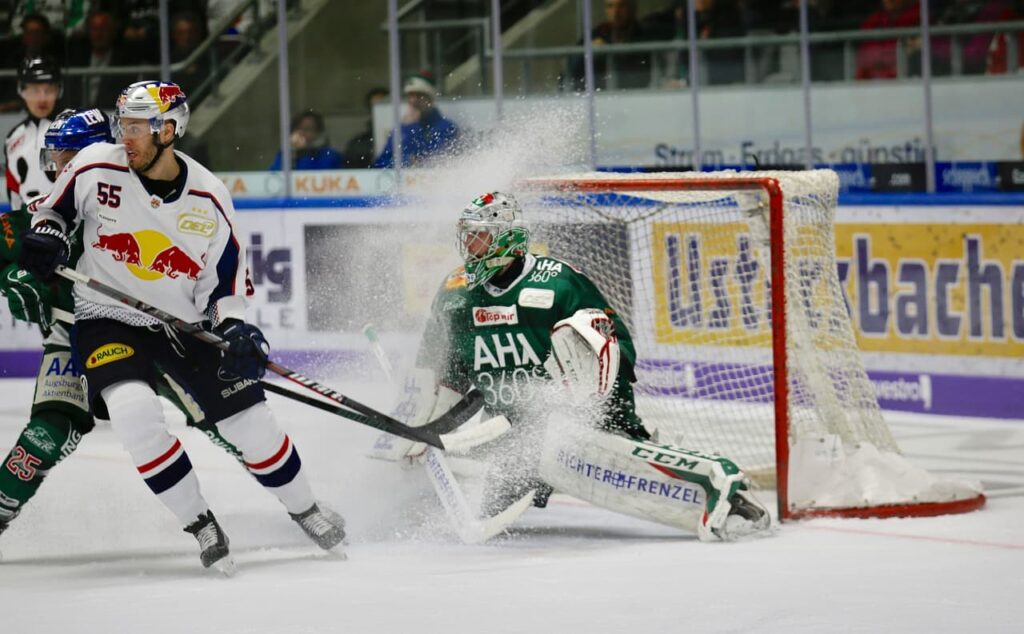Hockey equipment evolution is a journey via innovation, safety, and performance development. Let’s start from the beginning and trace the growth of the sport.
Early Days
Hockey was originally played with minimal equipment. Players frequently took on the ice with little to no protection. Sticks were just twigs or hand-carved wooden slabs, while skates were formed from animal bones. Padding was essentially non-existent, with players cushioning falls with heavy garments.
Advancements in Pads
By the early 20th century, goaltenders began using leg pads. These pads were fashioned from leather and felt, offering some protection, but they were heavy and would soak up water, becoming even heavier as the game progressed. Over time, materials like synthetic leathers and foams were introduced, significantly reducing weight and improving water resistance.
In the 1960s, player pads began to evolve. Shoulder and elbow pads, initially just felt and fiber strapped over the shoulders, became more sophisticated. Plastic caps were added for better impact protection. Shin guards followed a similar path, from simple felt pads to modern designs incorporating plastic and foam.
Helmet History
Helmets weren’t mandatory in the NHL until 1979, but their development began much earlier. The first helmets were leather and offered little impact protection. By the 1950s, the helmets incorporated plastics and padding, improving safety. Today’s helmets are the result of extensive research and testing, balancing protection with comfort and visibility.
Building upon the timeline of hockey helmet history, modern advancements have been guided by several critical factors. These are outlined in the bullet points below:
- Material Innovation: Contemporary helmets utilize advanced materials such as high-impact resistant polycarbonate shells and multi-density foam for shock absorption.
- Design Refinement: Aerodynamic design for less drag, strategic vent placement for better cooling, and reduced weight for comfort without sacrificing protection.
- Customization: The ability to customize helmets to the shape of a player’s head has become a standard, ensuring maximum protection and comfort.
- Safety Standards: Implementation of rigorous safety standards and regular updates to helmet certifications to keep pace with the latest research on head injuries.
Stick Evolution
Hockey sticks have seen one of the most significant transformations. From the solid wood sticks of the early days, the introduction of laminated wood in the 1940s offered more flexibility and strength. The 1990s saw the introduction of aluminum and eventually composite materials, allowing for lighter, more durable sticks with varying flexes to suit individual playing styles.

Skates Shift
Skates have also undergone a drastic change. The introduction of the closed-toe skate in the 1870s was a significant advancement from the earlier bone skates. Steel blades replaced iron, and in the 20th century, the entire design of skates was overhauled for better ankle support and comfort. Modern skates are lighter and designed for maximum speed and agility.
Protective Gear Growth
As the game became faster, the need for better protection grew. This led to the development of more advanced protective gear, including padded shorts, better chest protectors, and more effective groin protection. The materials used, such as Kevlar and high-density foams, are chosen for their impact-absorbing qualities.
Goalie Gear Transformation
Goalie gear has arguably changed the most. Early goaltenders wore minimal padding, but by the 1930s, chest protectors had come into use. These were initially made from leather and felt, but now they are constructed from lightweight composites and foams. Masks, which started as fiberglass molds in the 1950s, are now sophisticated pieces of equipment designed to disperse the force of a puck.
Modern Innovations
The latest innovations in hockey gear focus on performance as much as protection. Stick and skate technology continually evolve, with manufacturers seeking the perfect balance between lightness, durability, and player feel. Protective gear is designed to be as unobtrusive as possible, allowing for maximum movement while still providing safety.
Technological Integration
Today, technology is also being integrated into gear. From sensors in sticks that provide player performance data to skates that can be heat-molded for a perfect fit, the equipment is becoming smarter. Even the fabrics used in jerseys and undergear are designed to wick away moisture and regulate temperature.
Conclusion
The growth of hockey equipment mirrors the evolution of the sport itself, from a hobby played on natural ice with handmade equipment to a high-speed, high-impact game combining talent, physicality, and cutting-edge technology. This evolution is continuing, with safety and performance at the forefront, guaranteeing that athletes can perform at their peak while remaining injury-free. This tendency is likely to continue in the future, with improvements we can only begin to conceive.
